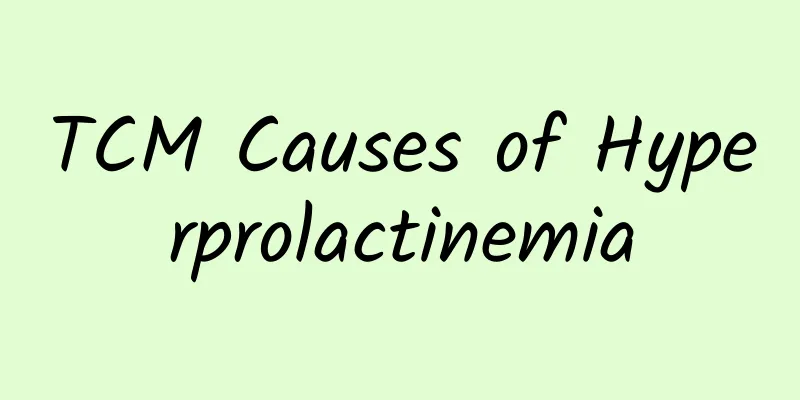TCM Causes of Hyperprolactinemia

|
Hyperprolactinemia is the most common pituitary disease, with galactorrhea and hypogonadism as prominent manifestations. Female patients may experience decreased libido and loss of sexual desire, which will be relieved after treatment as PRL levels decrease. Male patients mainly experience decreased libido and impotence, and in severe cases, body hair loss, testicular atrophy, reduced sperm count, and even azoospermia may occur. Hyperprolactinemia is a syndrome caused by internal and external environmental factors, characterized by elevated prolactin (PRL) (>25ng/ml), amenorrhea, galactorrhea, anovulation and infertility. From the perspective of pathological changes, it can be divided into tumor hyperprolactinemia, postpartum hyperprolactinemia, idiopathic hyperprolactinemia and iatrogenic hyperprolactinemia. The main clinical features are amenorrhea, infertility and galactorrhea. In today's fast-paced work and life, many women of childbearing age are extremely nervous and under great psychological pressure, which leads to endocrine disorders. Traditional Chinese medicine believes that this disease is caused by depression. Depression is the origin of the disease. Long-term mental and physical fatigue often causes the body's qi and blood to be deficient. Traditional Chinese medicine believes that this disease is deficiency, which is a staged result in the development of this disease. Depression and deficiency cause poor circulation of qi and blood, which eventually leads to stasis, a more serious consequence of the disease. Western medicine has no good way to treat this disease. Traditional Chinese medicine treatment only needs to follow the principles of relieving depression, replenishing and dispersing blood stasis, and most of them can achieve satisfactory results. Medicinal use: 10 grams of Angelica sinensis, 10 grams of white peony, 10 grams of Chuanxiong, 15 grams of Rehmannia glutinosa, 6 grams of safflower, 10 grams of peach kernel, 10 grams of Korean ginseng, 10 grams of Atractylodes macrocephala, 10 grams of Poria cocos, 20 grams of yam, 15 grams of bupleurum, 10 grams of Curcuma aromatica, 10 grams of Corydalis yanhusuo, 10 grams of Golden Bell Fruit, 10 grams of Polygonatum sibiricum, 10 grams of Chinese wolfberry, 10 grams of Curculigo orchioides, 10 grams of Morinda officinalis, and 6 grams of licorice. One course of treatment is 30 doses. |
<<: Can female uterine effusion be cured?
>>: Hyperprolactinemia postoperative medication
Recommend
Introduction to the classification of several types of vaginitis that are easily overlooked
In real life, there are several types of vaginiti...
Will 10,000 steps a day make you thinner? 5 weight loss concepts that will subvert your thinking
What would you do to combat obesity? Many people ...
What are the main symptoms that cause adnexitis?
Among the many gynecological diseases, adnexitis ...
Are there any advantages to laparoscopic ovarian cyst surgery?
The most direct and effective way to treat ovaria...
What can I eat to regulate my irregular menstruation?
Irregular menstruation is a common gynecological ...
How long after giving birth can you have sex? What are the dangers of having sex too early after giving birth?
How long you need to wait before having sex after...
Is diarrhea normal after a miscarriage?
Generally speaking, abortion refers to abortion s...
What you need to know before abortion
Abortion is the best way to terminate pregnancy. ...
How to treat an ectopic pregnancy?
How to treat an ectopic pregnancy? Ectopic pregna...
How much does intrauterine adhesion surgery cost?
How much is the cost of treating intrauterine adh...
How to regulate irregular menstruation, amenorrhea and sexual life
If a woman has not had her menstruation after the...
What are the real early symptoms of ectopic pregnancy in women?
I believe most women are familiar with ectopic pr...
Let me introduce you to the clinical manifestations of vulvar leukoplakia
Vulvar leukoplakia is quite harmful to female fri...
Easily get slim legs by doing 2 leg stretching exercises
Stretches to firm your thighs and calves. Because...
The most important harmful manifestation of dysmenorrhea
Among the many gynecological diseases, dysmenorrh...









